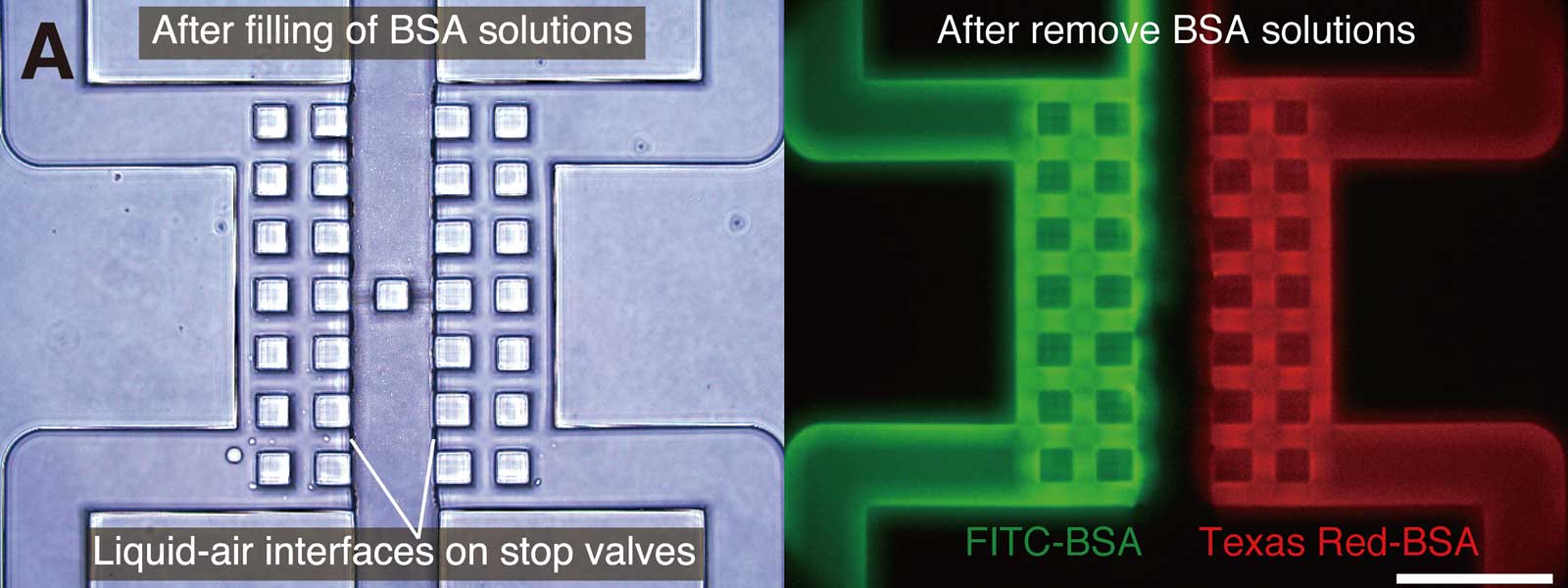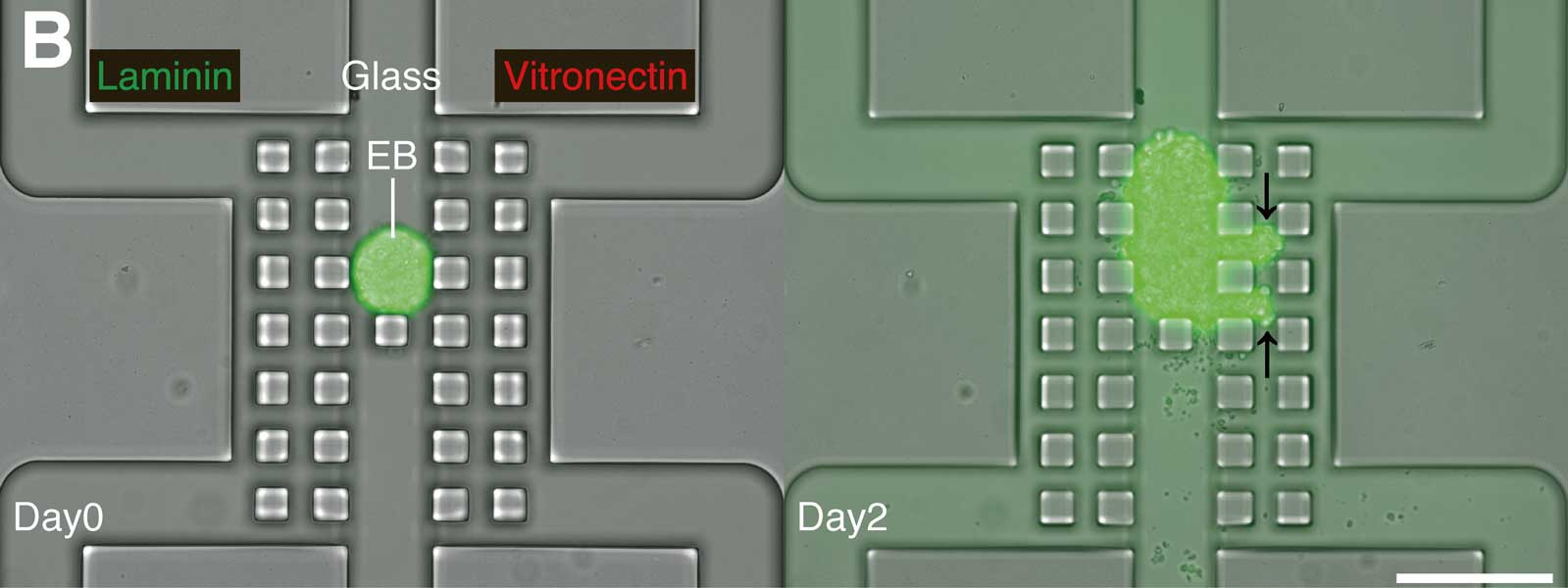Abstract
In terms of cell adhesion, the signal from extracellular matrix (ECM) to stem cells is one of the significant parameters that regulate their fate. Therefore, a surface modification technique which can create various patterns of heterogeneous ECM proteins on a substrate with high spatial resolution is strongly required to build complex biological tissues composed of variously-differentiated stem cells. Although a method based on microfluidic technologies has already been reported, it needs two different microfluidic chips, one for patterning of ECM proteins on surfaces and the other for cell culture. In addition, a laborious process for alignment of those chips is necessary for the method. To resolve this bothersome issue, we propose a new method which uses a microfluidic chip having capillary stop valves with partial barrier structures both for formation of heterogeneous ECM proteins-coated surfaces to control cell adhesion and for seamless cell culture. As a demonstration, we fabricated a microfluidic device and formed heterogeneous proteins-coated surfaces in the side channels of the device. In this device, cell adhesion can be controlled successfully by the heterogeneous ECM proteins-coated surfaces (laminin and vitronectin).
 Air-liquid interfaces created by using partial barrier structures in the side channels and formation of two different BSA conjugates-coated surfaces
Air-liquid interfaces created by using partial barrier structures in the side channels and formation of two different BSA conjugates-coated surfaces
 Cell adhesiveness of mouse iPS cells observed at vitronectin-coated surface (indicated by white colored arrows). All scale bars are 200 μm.
Cell adhesiveness of mouse iPS cells observed at vitronectin-coated surface (indicated by white colored arrows). All scale bars are 200 μm.
Collaboration
- Division of Protein Engineering, The Cancer Institute of The Japanese Foundation for Cancer Research
Sponsor
- JST